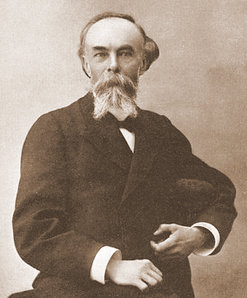Biot's Respiration on:
[Wikipedia]
[Google]
[Amazon]
Ataxic respirations, also known as Biot's respirations or Biot's breathing, is an abnormal pattern of breathing characterized by variable tidal volume, random apneas, and no regularity. It is named for Camille Biot, who characterized it in 1876. Biot MC. Contribution a l'étude du phénomène respiratoire de Cheyne-Stokes. Lyon Med. 1876;23:517-528, 561-567. Biot's respiration is caused by damage to the
 Ataxic respirations are caused by damage to the
Ataxic respirations are caused by damage to the
 Ataxic respirations are one of many unique respiration styles in an ill patient. There is an apparent controversy surrounding the novelty of ataxic respirations versus the well-known Cheyne-Stokes and cluster respirations, which Dr. Camille Biot deemed mutually exclusive. Notably, Dr. Miller Fisher was able to identify ataxic respirations in comatose patients differentiating the breathing from cluster breathing.
Ataxic respirations are one of many unique respiration styles in an ill patient. There is an apparent controversy surrounding the novelty of ataxic respirations versus the well-known Cheyne-Stokes and cluster respirations, which Dr. Camille Biot deemed mutually exclusive. Notably, Dr. Miller Fisher was able to identify ataxic respirations in comatose patients differentiating the breathing from cluster breathing.
About brain injury and functions
{{Respiratory system symptoms and signs Breathing abnormalities
medulla oblongata
The medulla oblongata or simply medulla is a long stem-like structure which makes up the lower part of the brainstem. It is anterior and partially inferior to the cerebellum. It is a cone-shaped neuronal mass responsible for autonomic (involun ...
and pons
The pons (from Latin , "bridge") is part of the brainstem that in humans and other mammals, lies inferior to the midbrain, superior to the medulla oblongata and anterior to the cerebellum.
The pons is also called the pons Varolii ("bridge of ...
due to trauma, stroke, opioid use, and increased intracranial pressure due to uncal or tentorial herniation. Often this condition is also associated with meningitis. In common medical practice, Biot's respiration is often mistaken for Cheyne–Stokes respiration, part of which may have been caused by them both being described by the same person and subtle differences between the types of breathing.
Ataxic respirations were discovered by Dr. Camille Biot in the late 19th century as he wrote multiple papers analyzing subtle differences in Cheyne-Stokes respirations in patients admitted to Hôtel Dieu Hospital.
Etymology
The word ataxia is commonly used in the medical literature. Examining the word "taxis," meaning order or organization, and "a," meaning without, the resulting meaning is "without order". Hence, ataxic respirations should equate to respirations without order, which is accurate.Etiology
 Ataxic respirations are caused by damage to the
Ataxic respirations are caused by damage to the medulla oblongata
The medulla oblongata or simply medulla is a long stem-like structure which makes up the lower part of the brainstem. It is anterior and partially inferior to the cerebellum. It is a cone-shaped neuronal mass responsible for autonomic (involun ...
(respiratory center of the brainstem
The brainstem (or brain stem) is the posterior stalk-like part of the brain that connects the cerebrum with the spinal cord. In the human brain the brainstem is composed of the midbrain, the pons, and the medulla oblongata. The midbrain is conti ...
) due to strokes or trauma. It generally indicates a poor prognosis and usually progresses to complete apnea
Apnea (also spelled apnoea in British English) is the temporary cessation of breathing. During apnea, there is no movement of the muscles of inhalation, and the volume of the lungs initially remains unchanged. Depending on how blocked the ...
.Diagnosis and management
Advances in medical care may be masking the presence of ataxic respirations. This could be related to the fact that the treatment for ataxic respirations typically results in intubation immediately upon diagnosis, withmechanical ventilation
Mechanical ventilation or assisted ventilation is the Medicine, medical term for using a ventilator, ventilator machine to fully or partially provide artificial ventilation. Mechanical ventilation helps move air into and out of the lungs, wit ...
to regulate patients' breathing. Furthermore, patients will often be intubated and on mechanical ventilation prior to the onset of ataxic respirations.
Related patterns
References
*External links
About brain injury and functions
{{Respiratory system symptoms and signs Breathing abnormalities